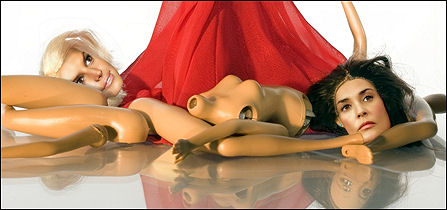Why do celebs with money to burn continue to willfully disfigure themselves and risk worldwide embarassment due to inelegant or woefully miscalculated plastic surgery? And why do surgeons perform procedures that could very possibly turn clients into laughing stocks and eventually, one presumes, result is a diminishment of their own professional reputations? These are questions that I wanted answered in Dale Hrabi‘s Radar‘s piece about this bizarre industry, and yet they’re barely addressed.

The deep-down truth is that clients probably understand and perhaps even accept the fact that they may wind up looking like carnival freaks, but they’re willing to risk it and, if necessary, live with it because of a deep-down feeling that the metaphor of aging — which they see as a constant biological advertisement for the loss of power and the inevitability of death — is a much worse thing to cope with on a daily basis.
Downside quote: “No one wants to be the next Meg Ryan, whose 2001 misadventures in lip enhancement left America’s erstwhile sweetheart looking like a duck, a lapse in judgment at which Hollywood still shudders. ‘She basically installed a vagina on her face,’ says producer Clifford Streit (American Psycho), adding helpfully, ‘When your lips get that big, your eyes look too small.'”
Upside quote: “There’s so much bad work in L.A., it’s not even worth discussing. But if people see someone famous who’s 50 years old and looks mysteriously phenomenal, that’s when they start leaning in at the parties and whispering, desperately trying to figure it out,” a source tells Hrabi. The latest focus of such awe, the source says, is Michelle Pfeiffer. “After Hairspray and Stardust came out simultaneously, I don’t know anyone who wasn’t saying, ‘How the hell does she look like that?’ Now everyone thinks they can do it, too.’ If only they knew the secret recipe.”
